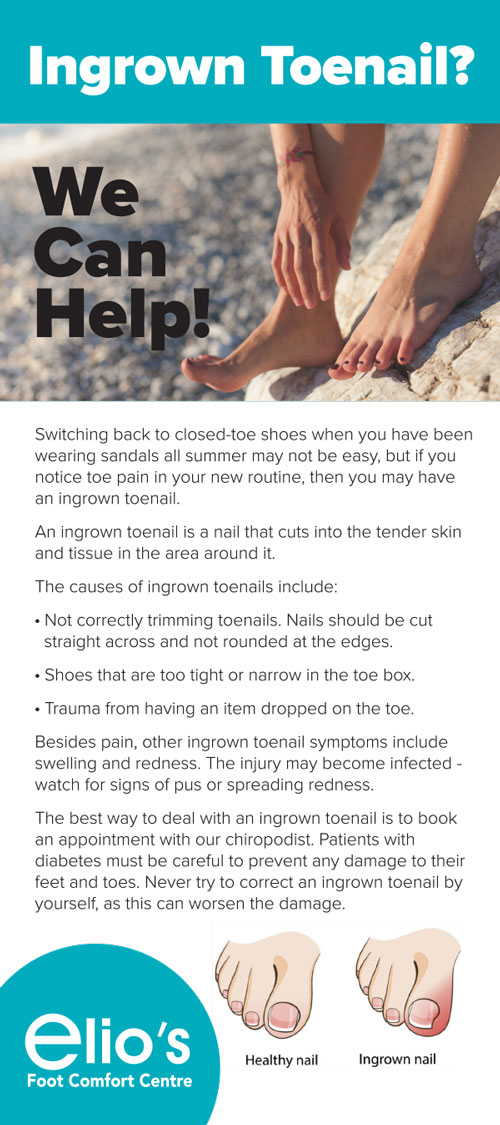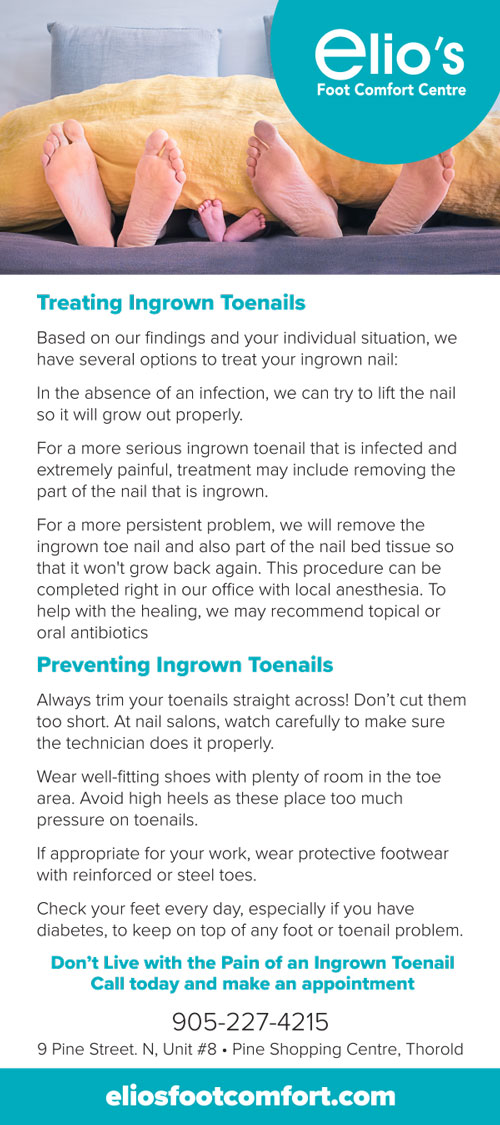Look below to better understand the causes of ingrown toenails, how to prevent ingrown toenails, and how to treat them.


Switching back to closed-toe shoes when you have been wearing sandals all summer may not be easy, but if you notice toe pain in your new routine, then you may have an ingrown toenail. An ingrown toenail is a nail that cuts into the tender skin and tissue in the area around it. The causes of ingrown toenails include:
- Not correctly trimming toenails. Nails should be cut straight across and not rounded at the edges
- Shoes that are too tight or narrow in the toe box.
- Trauma from having an item dropped on the toe
Besides pain, other ingrown toenail symptoms include swelling and redness. The injury may become infected – watch for signs of pus or spreading redness. The best way to deal with an ingrown toenail is to book an appointment with our chiropodist. Patients with diabetes must be careful to prevent any damage to their feet and toes. Never try to correct an ingrown toenail yourself, as this can worsen the damage.
Based on our findings and your individual situation, we have several options to treat your ingrown nail; In the absence of an infection, we can try to lift the nail so it will grow out properly. For a more serious ingrown toenail that is infected and extremely painful, treatment may include removing the part of the nail that is ingrown. For a more persistent problem, we will remove the ingrown toe nail and aalso part of the nail bed tissue so that it wont grow back again. This procedure can be completed right in our office with local anesthesia. To help with the healing, we may recommend topical or oral antibiotics.
Always trim your toenails straight across! Don’t cut them too short. At nail salons, watch carefully to make sure the technician does it properly. Wear well-fitting shoes with plenty of room in the toe area. Avoid high heels as these place too much pressure on toenails. If appropriate for your work, wear protective footwear with reinforced or steel toes. Check your feet every day, especially if you have diabetes, to keep on top of any foot or toenail problem.
